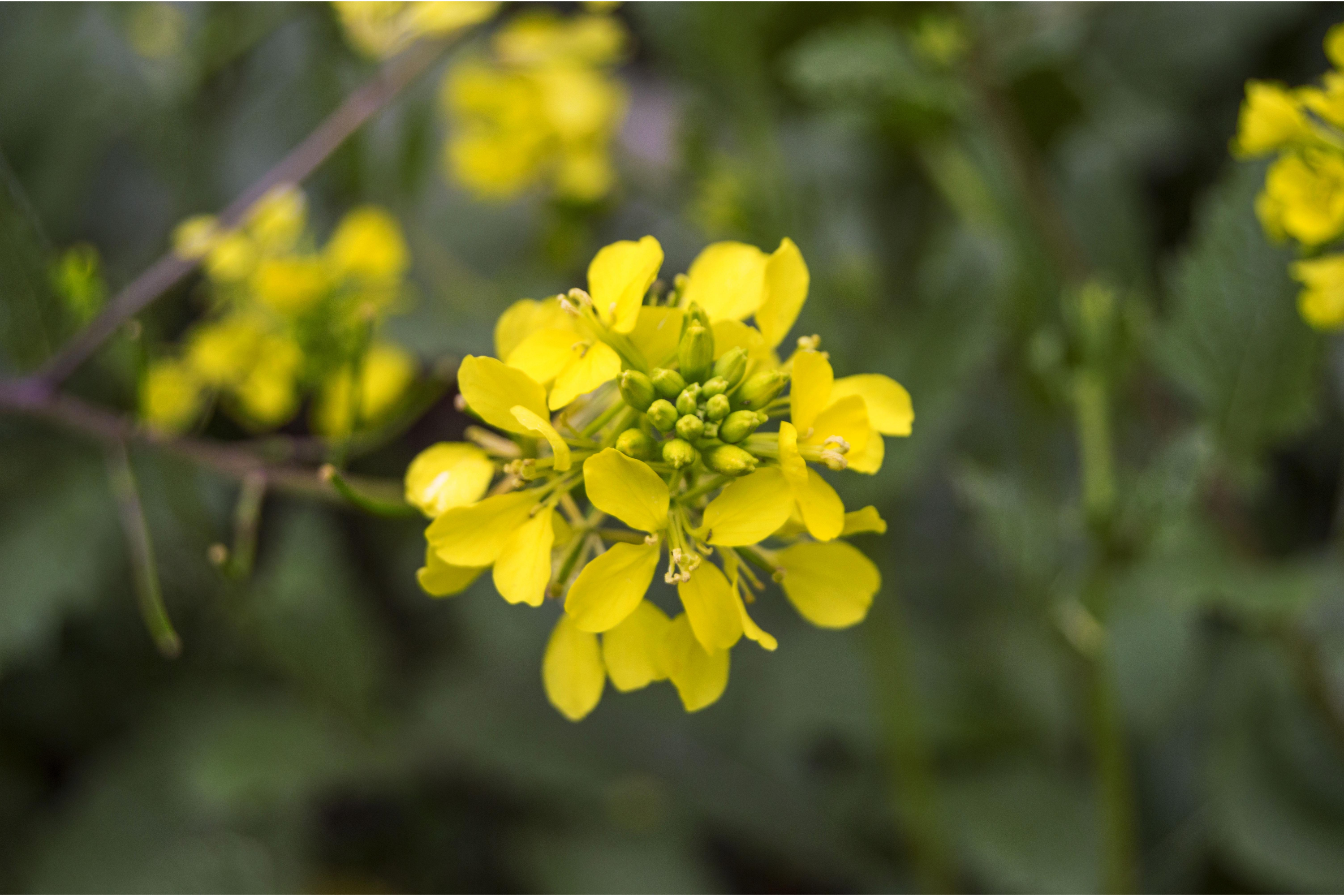Charlock mustard
(Sinapis arvensis)

Description
Sinapis arvensis, the charlock mustard, field mustard, wild mustard or charlock, is an annual or winter annual plant of the genus Sinapis in the family Brassicaceae. It is found in the fields of North Africa, Asia and Europe. Pieris rapae, the small white butterfly, and Pieris napi, the green veined white butterfly are significant consumers of charlock during their larval stages. Sinapis arvensis reaches on average 20–80 centimetres (7.9–31.5 in) of height, but under optimal conditions can exceed one metre. The stems are erect, branched and striated, with coarse spreading hairs especially near the base. The leaves are petiolate (stalked) with a length of 1–4 centimetres (0.39–1.57 in). The basal leaves are oblong, oval, lanceolate, lyrate, pinnatifid to dentate, 4–18 centimetres (1.6–7.1 in) long, 2–5 centimetres (0.79–1.97 in) wide. The cauline leaves are much reduced and are short petiolate to sessile but not auriculate-clasping. It blooms from May to September, or May to August, in the UK. The inflorescence is a raceme made up of yellow flowers having four petals with spreading sepals. The fruit is a silique 3–5 cm long with a beak 1–2 cm long that is flattened-quadrangular. The valves of the silique are glabrous or rarely bristly, three to five nerved. The seeds are dark red or brown, smooth 1-1.5 mm in diameter. A native of the Mediterranean basin, from temperate regions of North Africa, Europe and parts of Asia. It has also become naturalised throughout much of North America, South America, Australia, Japan and South Africa. It grows in the plains and mountains, in pastures, fields, roadsides, waste places (such as railways, tips, and waste ground), and ruins, but mainly in cultivated places. It prefers calcareous soils in sunny places, at an altitude of 0–1,400 metres (0–4,593 ft) above sea level. It contains chemicals of the class glucosinolates, including sinalbin. The seeds contain a plant hormone, Gibberellic acid, which effects the dormancy of the seeds. It was formerly described by the Swedish botanist Carl Linnaeus in his seminal publication 'Species Plantarum' on page 668 in 1753. It is commonly known as charlock mustard, field mustard, wild mustard, or charlock. The genus name Sinapis derives from the Greek word sinapi meaning 'mustard'. The species name arvensis is a Latin adjective meaning 'from/of the field'.
Taxonomic tree:







